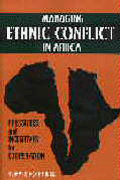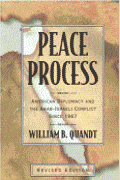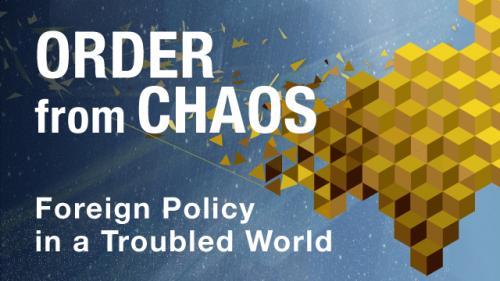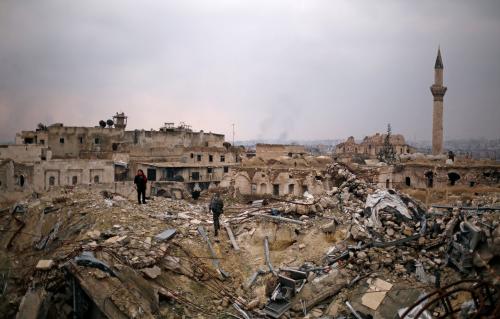 In the wake of the lightning-fast 1967 War, Israel suddenly found itself in control of territory it never expected to conquer. Much of the contemporary discussion of the 1967 War’s outcome is focused on the conquest of East Jerusalem and the West Bank, and its consequences. But from the perspective of regional politics and the U.S. role in the Middle East, Egypt’s role in the conflict is just as critical.
In the wake of the lightning-fast 1967 War, Israel suddenly found itself in control of territory it never expected to conquer. Much of the contemporary discussion of the 1967 War’s outcome is focused on the conquest of East Jerusalem and the West Bank, and its consequences. But from the perspective of regional politics and the U.S. role in the Middle East, Egypt’s role in the conflict is just as critical.
The 1967 war came at the tail end of a period of tremendous ferment in the Middle East, a fact that presents some interesting parallels between 1967 and the present day, with implications for questions now swirling around Israel’s relations with the Arab states. The pre-1967 Middle East featured intense competition between traditional monarchies and Arab dictators advancing a secular transnational ideology of pan-Arabism. As part of this struggle, Saudi Arabia and Egypt were locked in a proxy conflict in Yemen—just as Saudi Arabia and Iran are today. Historian Malcolm Kerr called this era the Arab Cold War, because it was an intense war for influence over how Arab states should be organized, and because it was viewed as existential on both sides.
The Arab-Israeli war that began on June 5, 1967, proved to be the beginning of the end of this period of turmoil, of the Arab Cold War and also of the global cold war in the Middle East. There is a direct line from the outcomes of the 1967 war—the defeat of the combined Arab armies and Israel’s unexpected conquest of territory including the Sinai, East Jerusalem, and the West Bank—to the regional order that came after.
The defeat of 1967 began to shift thinking in Egypt and the region about how to deal with the State of Israel. Because of the conquest of Sinai and Israel’s ability to trade land for peace, Israel suddenly had “cards” to play in a negotiation with Arab neighbors who had previously only sought Israel’s destruction. The changed regional context pushed Egypt’s new president, Anwar Sadat, toward a re-evaluation of Egypt’s fundamental foreign policy orientation. Sadat’s ouster of Soviet military advisers in 1972 and the opening of closer ties to Washington, the historic 1977 visit of Sadat to Jerusalem, and the 1978 Camp David Peace Accords cemented a new Middle Eastern order that was U.S.-led and centered around Gulf security and Arab-Israeli diplomacy. This Middle Eastern order relied on U.S. cooperation with a coalition of status-quo states led by Israel, Egypt, and Saudi Arabia—former rivals—and it served the interests of the United States, Israel, and America’s Arab partners fairly well for decades.
That status-quo regional order is what fell apart in the violence that followed on the Arab uprisings of 2011. The grievances that drove the Arab uprisings were in large part due to the failures and repression of the Arab leaders that prevailed under that order. Indeed, that’s why U.S. presidents including Bill Clinton, George W. Bush, and Barack Obama pressed those leaders to respect human rights and advance political and economic reforms. Instead, popular protests in Syria, Libya, and elsewhere were met with violence, giving rise to civil wars and lending space to ISIS and other extremist groups. Today, there is no status quo left to defend—instead, factions are contending for influence to shape what might emerge from today’s chaos.
A new regional order that protects the interests of America and its allies will not emerge solely from battlefield victories, but from investments in a common future.
There have now been six years of renewed turmoil and intense geopolitical competition in the region, including competition between Sunni-led Arab states and Iran, and a new competition between more traditional state leaders and transnational ideological movements that are trying to supplant those leaders. As in the pre-1967 Middle East, both sides today see their struggles as existential.
The question is whether today, 50 years after 1967, we are also at the beginning of the end of a period of regional turmoil. Because as much as this upending of the region has generated tremendous conflict, a lot of human suffering, and a lot of anxiety and uncertainty for states across the region including Israel, it also presents opportunities to build new kinds of partnerships to restore order and stability in the region, under the banner of peace and conflict resolution.
Right now, Israel and the Arab states share a common sense of threat from Iran and its allies like Hezbollah, and from violent extremist Sunni groups like ISIS, al-Qaida, and Hamas. President Trump’s visit to the Middle East was intended to cement a regionwide coalition against these threats. But stabilizing the region will require more than a shared sense of threat—it will require Arabs, and Israelis with them, to develop a shared vision for the region they want to build, including new means to resolve longstanding conflicts, and a plan for constructing effective, just, and sustainable governance in areas where ISIS and other extremist groups have been holding sway.
A new regional order that protects the interests of America and its allies will not emerge solely from battlefield victories, but from investments in a common future. President Trump’s aspirational rhetoric about driving out evil, particularly when combined with his request for severe cuts to U.S. diplomacy and assistance, will not get that job done. Let’s hope that Arab and Israeli leaders will get to work together on filling the gaps in both strategy and resources.








Commentary
50 years after 1967, investing in a common future in the Middle East
May 30, 2017